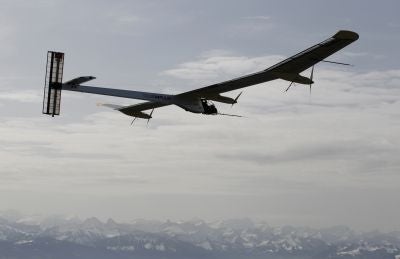The carbon footprint produced by flying could in the future be greatly reduced by the use of solar technologies like those applied to record-breaking aircraft the Zephyr and Solar Impulse.
In America an unmanned solar aircraft named the Zephyr is close to completing a constant 14-day flight using only solar energy. The plane has currently been flying for one and a half weeks in the Arizona desert and has already broken a number of world records; at 14:40 BST on Friday, July 23 the plane's total flying time will stand at 14 days.
Additionally, manned solar aircraft the Swiss-made Solar Impulse completed a nonstop 26-hour flight on July 8 in Switzerland and is expected to embark on cross-Atlantic and round-the-world flights in the next few years.
Solar-powered planes such as these don't release carbon dioxide while in flight and therefore are far more environmentally friendly. Currently planes are a major contributor to CO2 emissions which cause global warming, and long-haul flights are considered the most damaging to the environment. The UK Energy Saving Trust estimates that a return flight from the UK to Thailand releases almost two tons of CO2 per passenger, giving each passenger a greater carbon footprint than non-flyers' carbon footprints for a year.
According to consumer carbon footprint calculator terrapass.com, a round trip flight from Paris, France to New York, USA on Air France releases 771 kg (1,700 lbs) of CO2 and a round trip from Los Angeles in California to Beijing, China on Air China would release emissions of 2240 kg (4,940lbs) of CO2 per person.
Other websites such as chooseclimate.org allow users to select their destination and departure point on a world map, choose the type of plane in which they are flying and the type of ticket before calculating the carbon emissions for that flight.
Though solar-powered passenger crafts are a long way from development, manufacturers of planes such as Solar Impulse state on their website that they wish to demonstrate the importance of new technologies in sustainable development.
It is hoped that pioneering steps such as manned solar and unmanned perpetual flight will lead to the development and eventually widespread implementation of solar technology in aircraft.
Boeing also recently developed the 787 Dreamliner, which is designed to use fuel more efficiently, therefore reducing emissions, and United Airlines has recently undertaken test flights using cleaner fuels.

Join our commenting forum
Join thought-provoking conversations, follow other Independent readers and see their replies
Comments